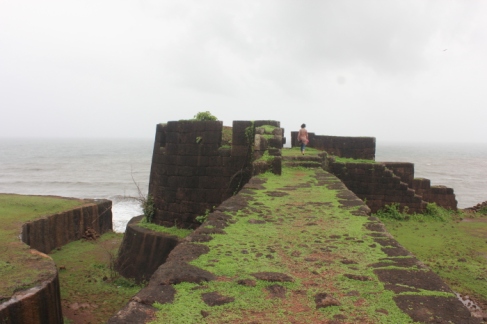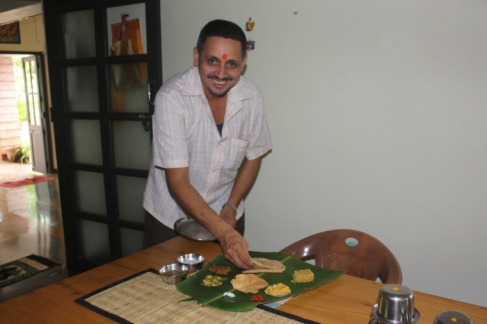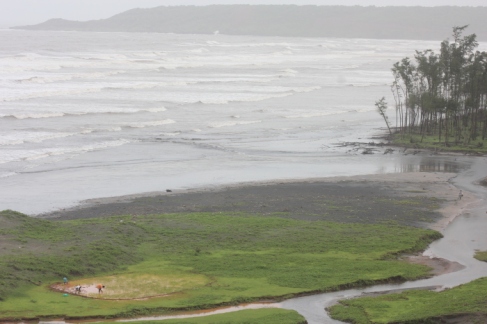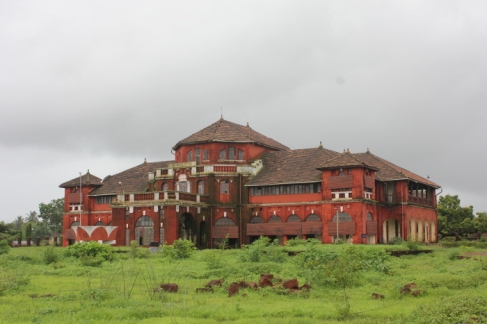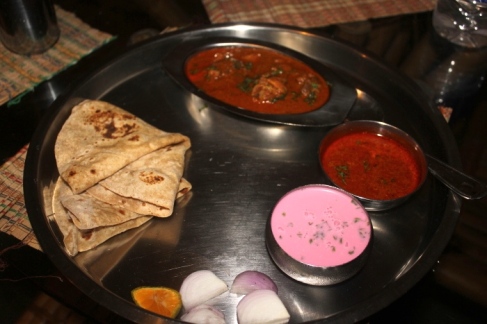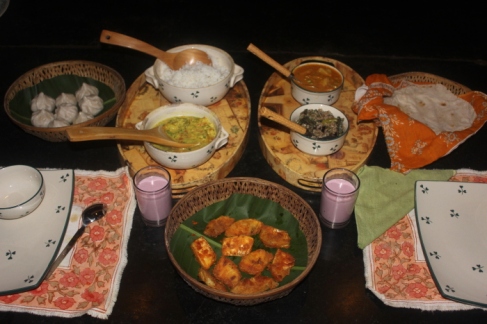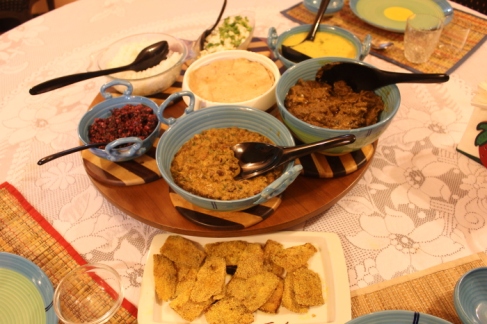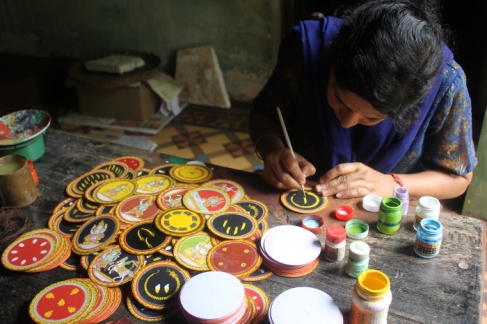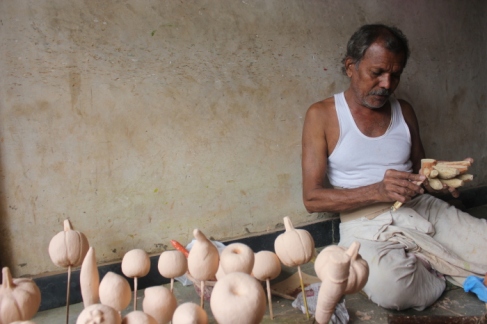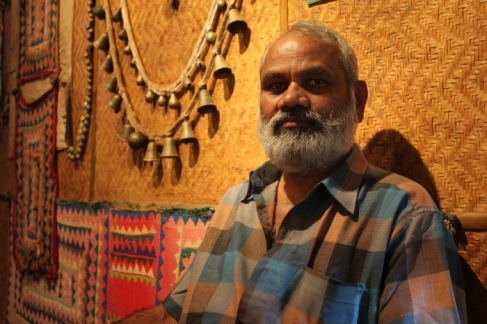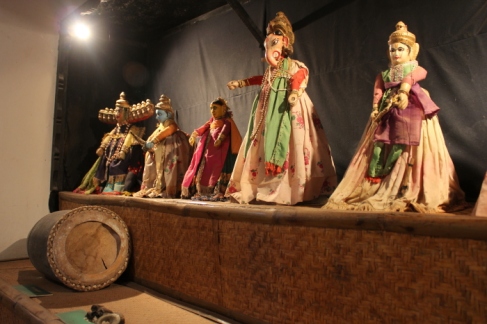ANURAG MALLICK and PRIYA GANAPATHY visit Konkan’s delightful homestays to explore seaside forts, Malvani cuisine, the mango trail, Sawantwadi’s artistic heritage, a Burmese palace in Ratnagiri, a temple built by Arabian shipwrecks and other surprises
The train sped past the green landscape of Chiplun and Sangameshwar, criss-crossing rivers, cataracts, tunnels and bridges as the Mandovi Express slowly pulled into Ratnagiri. The Konkan rail journey is easily one of the prettiest in India and we were half disappointed not to continue on the coastal route to Goa and Mangalore. But a visit during mango season and the odd chance of rain made us cheer up.
Ratnagiri is legendary for its hapoos or Alphonso and we were shamelessly headed for a homestay that promised unlimited mangoes for breakfast. A short 13km drive from town took us to Atithi Parinay at Kotawde where Medha Sahasrabuddhe greeted us cheerfully outside a beautiful laterite and stone house. Surrounded by hills on three sides, the 3-acre patch was located on the banks of the swirling Kusum river. Medha promised us a walk to the river and paddy fields beyond. ‘But all discoveries will have to wait’, announced her mother Vasudha, bringing out fresh banana leaves.
Though the Konkan Coast is synonymous with its seafood and spicy Malvani fare, we were about to be introduced to the wonderful world of Chitpawan Brahmin cuisine. Out came hot polis (thin large chapatti cooked with a little oil), koshimbir (dry uncooked vegetable raita), aamti (sweetish thin daal), moramba (mango preserve) and a cabbage-bean stir fry. ‘We have typical preparations’, explained Vasudha aunty. ‘There’s kulith usal (stir-fried horsegram), bhopla bharit (pumpkin mash), padwal (snake gourd), sandhan (jackfruit cake), patodey (rice cakes steamed in turmeric leaves), chunda (spicy mango preserve) and gawasni chi poli (rice flour paratha).’
Over an extended lunch, we also learnt how the Sahasrabuddhes got their unique family name. Originally called Ganpules, they were once employed as warriors and advisors with the Peshwas, who gifted them a village. They came and settled in Kotawde, but another family laid claim to the land. The Ganpules put forth a proposition that one representative from both sides would burrow in a hole; whoever could last longer would be the true owner. The wily Ganpules stocked up their hole with provisions, outlasted the opponent and got their land back. The Peshwas granted them the title ‘sa-hastra-buddhi’ or someone who had knowledge of both weapons and brains.
After a quick tour of the property to see the tree house, a Swiss tent and the bamboo bridge over the river, we were off to Ganpatipule. Besides a touristy beach lined with hotels and eateries, the main attraction was Lord Ganesha’s shore temple. The priest told us that once every year the surf comes up as if to touch the feet of the idol as a symbolic gesture. Legend has it that a cowherd’s cows had stopped giving milk and would offer milk only at a particular spot on the reef, leading to the discovery of the self-manifest stone image. Devotees whispered their entreaties into the ears of the large brass mouse outside the shrine while some circumabulated the hill by a paved path. After a quick peep at Pracheen Konkan, a showcase of the region’s culture, we visited the birthplace of freedom fighter and statesman Bal Gangadhar Tilak at Ratnagiri. The humble two-storey house where he grew up is now a museum, displaying his personal belongings and achievements.
What we least expected was a palace in Ratnagiri for a Burmese king. After the British forces defeated and captured Thibaw, the erudite king of Burma (Myanmar) in 1885, they shipped him first to Madras and then Ratnagiri to prevent a possible revolt back home. The rented bungalow where he was placed under house arrest was unfit for a king and the British permitted him to build a royal residence for himself. The king supervised the construction of Thibaw Palace every day till 1910 and both he and his wife breathed their last in the same building. Built out of laterite, mortar and Burmese teak, the majestic brick red palace on a grassy embankment had a small museum dedicated to the king.
Our royal obsession was the hapoos, the king of mangoes, and the trail led us to Devgad. It was ironic that India’s most popular variety of mango was named after a Portuguese Governor. Alphonso is allegedly named after the second governor of Portuguese India Afonso de Albuquerque (1453-1515). Enamoured by this fruit, the colonists undertook mango grafting using European methods. A graft from Brazil provided the perfect fruit, was baptized Affonse and came back to India in the 16th century as Alphonso. Locals in Goa mispronounced it as Aphoos in Konkani and by the time it spread to Maharashtra, it was called Hapoos. There was something about the soil, air, landscape or optimal proximity to the sea that made Devgad’s Hapoos unlike any other. The best mangoes came from a patch 20km from the coast. There were other varieties too – the tangy Pairi, the sweetmeat-sized Dudh peda, the tiny Bitki aam or the pumpkin-sized Bhopali amba.
Set amidst mango orchards and brick factories on the Devgad-Nipani Road (SH-117), was Pitruchhaya homestay near Shirgaon. One of the earliest homestays developed by Culture Angan, the house came with a stunning terrace suite, paintings done by artists from Pinguli and bamboo furniture from KONBAC (Konkan Bamboo & Cane Development Centre) at Kudal. The warm couple Vaishali and Vijay Loke gave us an authentic taste of Malvani fare from kolambi (prawn) and kalva (clam) fry to Malvani mutton and modka, a small tasty fish found at the edge of the sea.
A brief stop at the quiet Devgad Fort and we continued down the coast to Kunkeshwar. Situated on the very edge of the sea and lashed by waves was a 400-year-old Shiva temple with a strange past. Caught in a storm, sailors of an Arabian vessel saw a light and promised to build a shrine to the region’s chief deity if they survived. True to the promise, the Arabs constructed a temple out of laterite on the shore. Knowing that they won’t be spared for this irreligious deed if they went back, they jumped from the temple and gave up their lives. Their samadhi can still be found here. The serene Mithbav Beach nearby had its share of unusual shrines like the Betaal Mandir dedicated to a wandering spirit that induced madness on any passersby at twilight. The clifftop temple of Gajbadevi on the dungar (hill) was dedicated to a goddess who appeared in a dream and instructed villagers to install her there for safe passage.
After much meandering, we finally came to Sawantwadi and found ourselves at Nandan Farms homestay, 2 km from town on Amboli road. Tucked away in a 12-acre farm at the base of a small hillock, the ochre bungalow had a sloping tiled roof and earthy interiors. Cloaked in green, it was like being in an enchanted garden. Our friendly host Amruta Padgaonkar or Ammu, originally from Vengurla, was an expert in Malvani cuisine. We negotiated our way through a maze of modaks, endless polis, okra coconut fry, rice, aamti and phanas (jackfruit) fritters.
About 12km from Sawantwadi on the road to Vengurla was Dwarka, an organic farmstay that followed a ‘plant to plate’ philosophy. Dilip Aklekar showed us around his 15-acre farm with cashew, coconut, banana, pineapple and 230 hapoos trees. ‘We grow our own fresh fruits, pulses and vegetables, have a vermi-compost plant, use bio gas for cooking, all the milk comes from our cows and we even practice ‘gomutra kheti’ or using cow urine for agriculture!’ Orioles, hornbills and paradise flycatchers flitted about the trees as we too hopped from room to room, each with a colour and style.
The food was amazing spread of kombdi (chicken) curry, deep-fried raw banana fritters, beetroot stir fry, red gram curry and other delights. It was with great difficulty and the indolence of debauched nabobs that we could move out of there. As if justifying the adage ‘Only when the belly is full can the arts prosper’, we set off on a leisurely cultural tour of Sawantwadi.
Unlike us, the wizened hand that held the paintbrush was rock steady as it hovered over an old wooden table. It swept down to make a few deft swirls and strokes and a warrior’s white horse reared out of the table. MV Kulkarni, the old artist smiled at our awestruck expressions before he nonchalantly rubbed it off with a rag, saying “Now I’ll paint a figure”. Again, we saw a masterpiece complete in under a minute. No pencil sketch, no reference image…just endless years spent painting Ganjifa cards had made artists like Kulkarni ‘imagine things right before the eyes’.
We were in the durbar hall of the 17th Century Sawantwadi Palace. Sunlight filtered in from a row of windows as we watched a clutch of artists engrossed in the detail of their design, struggle to keep an ancient tradition from vanishing into the mists of time. Each card is a complete handpainted artwork. The group of chitrakars (artists) spend hours to produce diverse styles and decks. Their work was clearly demarcated. Some gave the base colour to the cards, others work on symbols, few worked on the borders and the senior artists painted the intricate court cards of the suit.
Seated in the portico of her beautiful Palace, Her Highness Satwashiladevi, the Queen shares more about this unique art which was saw a revival under her royal patronage since 1972. “Ganjifa, possibly of Persian or Urdu origin means ‘stacking’. It was probably the Moghul rulers who introduced these playing cards in India as early as 7th century. It became popular in other princely states like Bengal and Kashmir and gradually moved to Mysore and Orissa.
The original Moghul Ganjifa or Changa-kanchan has 96 cards in the standard eight suites of 12 cards each based on the eight departments of the state – treasury, armoury, music, etc. Soon, artists started adapting it for the masses with Hindus themes of mythology and astrology. The Dashavatara Ganjifa has the avatars or incarnations of Vishnu in ten suites of 120 cards. Rashi Ganjifa based on the zodiac has 144 cards and the Navagraha based on the planets has 108 cards. The antique collections were made of cloth, ivory, leather and Palmyra leaves and can only be found in some royal homes and museums.”
In Chitare Ali, a rambling lane ascending from the picturesque Moti Talav, Prakash Balu Chitari intently slathered kitta (a paste of tamarind seeds, pebbles, powdered and dried jute pulp and sawdust) on a wooden banana with a palette knife. “We always use pangara wood, it’s porous and light. The paste fills the pores and acts as a base. After this dries, we apply paint using brushes made of animal hair (squirrel, goat or bear).” He was one of the few surviving practitioners of the age-old tradition of handcrafted wooden lacquerware. From 36 families, it had whittled down to five. “It is time-consuming but lucrative. Brahmin families in Goa and Maharashtra buy entire sets of these toys as part of a bridal trousseau. So, besides domestic sales and exports, one wedding helps us earn Rs. 8000” he says. His wife chuckles, “But we do all the hard work. My children and I cut leaves from recycled paper, paint them, fix the stalks and add the finishing touches.”
Like in a scaled down version of Karnataka’s toy town Channapatna, vibrant wooden handicrafts, artificial fruit bowls and strings, lacquered bangles and beads, corkwood flowers, spinning tops, puzzles, rattles, paats (wooden dais) were stacked for sale and a few shop-cum-factories lined the street. At PD Kanekar’s shop, we saw a live demo of the quirky toys – collapsible giraffes, kissing pigs, monkeys on wire, a brood of pecking hens, etc. Besides the signature vegetables and fruits collections in all sizes and colours, we also found Mexican-style ristras (chillies, onions and garlic ristras on strings) and local versions of the enigmatic Russian Matryoshka dolls.
Just a few kilometers away at the Thakar Adivasi Kala Kendra at Pinguli, Parashuram Vishram Gangawane’s live demonstration of the dona vadya (vessel instrument) had us captivated. On a large upturned trough used to serve kanji (gruel), he scraped two ladles to produce a wailing tune and sang a haunting melody. “We are ‘paramparik kalakars’ of the Thakar community, a forest-dwelling tribe who inhabited the tekdis of Sahyadri paat (hills of the Western Ghats). What you saw was one of our 11 loka kalas (folk arts), performed by our women during Ganesh Chaturthi as a symbolic gesture to rouse Lord Ganesha.”
Legend has it that when Shivaji encountered them in the forest, he was surprised by the artistic sophistication of the unclothed, unlettered Thakars. Using natural dyes, artists painted on leaves and a sutradhar narrated stories or Chitra-kathe while these moving pictures were shown to the audience. Craftsmen fashioned cutwork figures from animal hide while an ensemble of singers and musicians set a background score to the Jaiti or Shadow Puppetry. Applying simple laws of light and physics, images projected on a screen by campfire were enlarged or reduced to create drama. The amazed crowds often believed that the shadows grew bigger because of the blowing of the conch! Such unique forms of storytelling were the purest form of entertainment long before the advent of cinema.
Shivaji gave the Thakars raj-ashray (royal asylum) and they received further patronage from Sawantwadi’s rulers like Khem Sawant and Bapu Maharaj, who helped them develop their arts and showcase it over 9 days at the Kelbai temple in Kudal. With royal consent, they could take their tambura and taal to collect one ser of dhaan (kilo of rice) and alms from each house. For nearly 6 months of the year, the Thakars travelled from village to village carrying their jaiti (box) of nearly 50 puppets. As soon as they placed their bundles down at the headman’s house, word would spread about their arrival. They would perform the same evening before moving to the next village in the morning. Not surprisingly, the kings of Sawantwadi often employed these nomadic artistes as spies and informants!
They were given imperial handmade paper and commissioned to paint permanent artworks. “I have a priceless cache of nearly 500 old paintings that have managed to survive, along with hundreds of puppets that are not displayed”, Parashuram gestured at his makeshift museum, a renovated gothan (cowshed) cramped with artefacts. “Where’s the space here or the money to build a bigger complex? How much can I do alone, without any support? Of the 125 Thakar houses here, only one or two strive to keep this 500-year-old tradition alive. And what of Pugdi geet, Tarva geet, Povada, Kal-sutri bavlya, Gondal, Poth raja…” his voice quavers. “In Panglu Bael, a bedecked bullock accompanies a dholki player, reminding all those who hear it of the departed souls. There’s Pingli, where a man with a rattledrum leaves home at 3 am and returns at dawn, serving as a watchman and alarm clock on the move.”
With the odd shows and homestays like Nandan Farms and Dwarka Farmhouse as platforms, Pinguli’s artists have found a tiny window to exhibit their talent. At the souvenir section, we browsed through stunning paintings on epic themes available for a song. An hour’s show with 8 people could be arranged for as little as Rs.5000 while traditional frescos could be created for as little as Rs.300-400 per sq foot.
It was a far cry from the old days when they were gifted as much grain as they could carry away without losing balance over ten paces. As we boarded the Konkan Kanya Express for the train journey back to Mumbai, it seemed nothing short of travesty that urban malls showcased a glut of mass-produced branded goods, while rural artisans struggled in hovels to keep ancient traditions from vanishing into the mists of time.
Authors: Anurag Mallick & Priya Ganapathy. This article appeared in the June, 2012 issue of Rail Bandhu, the Indian Railways’ in-train magazine.
